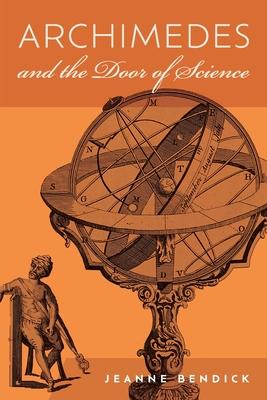Archimedes and the Door of Science is a child-friendly biography of ancient Greek mathematician and scientist, Archimedes. Through her simple explanation and charming illustrations, author Jeanne Bendick describes the life of this great man, as well as the enormous impact his discoveries have had on the world in the 2,200 years since his death.
Author and artist Jeanne Bendick (b. 1919 - d. 2014) wrote and illustrated over 100 children's books over her long career, primarily in the field of science. She was particularly adept at reducing complex scientific principles into simple language that children could understand, helping to pique their interest in science and the people who made these early discoveries.
Bendick was taught to draw by her maternal grandfather, who was himself an artist. He took her to the American Museum of Natural History on Sundays as a child, which helped to foster her interest in science and history. After earning her Bachelor of Arts degree at the Parsons School of Design in New York City in 1939, she and her television and film producer husband put their work on hold to devote themselves to the World War II effort.
After the war, the couple returned to their creative endeavors, and Bendick began writing and illustrating her own books. Archimedes and the Door of Science (1962) is light and easy-to-understand for the young reader. Part-biography and part-science primer, the book turns the life of a man who lived thousands of years ago into a source of interest and inspiration.
The book begins by painting a picture of life in ancient Greece and explaining how young Archimedes would have fit within it. Focusing on the day-to-day home and school life of the boy, readers are able to compare the similarities and differences to their own lives.
Bendick explains many of Archimedes' inventions and discoveries in a way that both children and adults will be able to understand. From the Archimedes screw, which is still used today for irrigation purposes, to a simple pulley that could move an entire ship, she tells the stories behind these inventions (to the best of modern knowledge) and why they work, illustrated with charming line drawings. These help to clarify some of the more complex ideas and aid in the storytelling of the great man's life. She also includes some simple experiments that kids can replicate themselves to demonstrate the great mathematician's discoveries, such as using a pencil stub as a hydrometer to test the density of liquids.
Bendick is also honest about Archimedes' shortcomings. In the field of astronomy, for example, he thought that the distance to the furthest star in the sky was so short that it would have been within our own solar system. He estimated the earth's circumference to be ten times larger than it is. And he stated that the sun was at least thirty times larger than the moon. While he was technically correct, the sun is in fact over 1,300,000 times larger than the moon.
"Most of the things you know about science would have dazzled and bewildered him," writes Bendick. "But many of the things you know about science begin with Archimedes."
Other books by Jeanne Bendick include Galen and the Gateway to Medicine, The First Book of Space Travel, and her final children's book, Herodotus and the Road to History published when she was 91.
"If I were a fairy godmother," she said, "my gift to every child would be curiosity."
